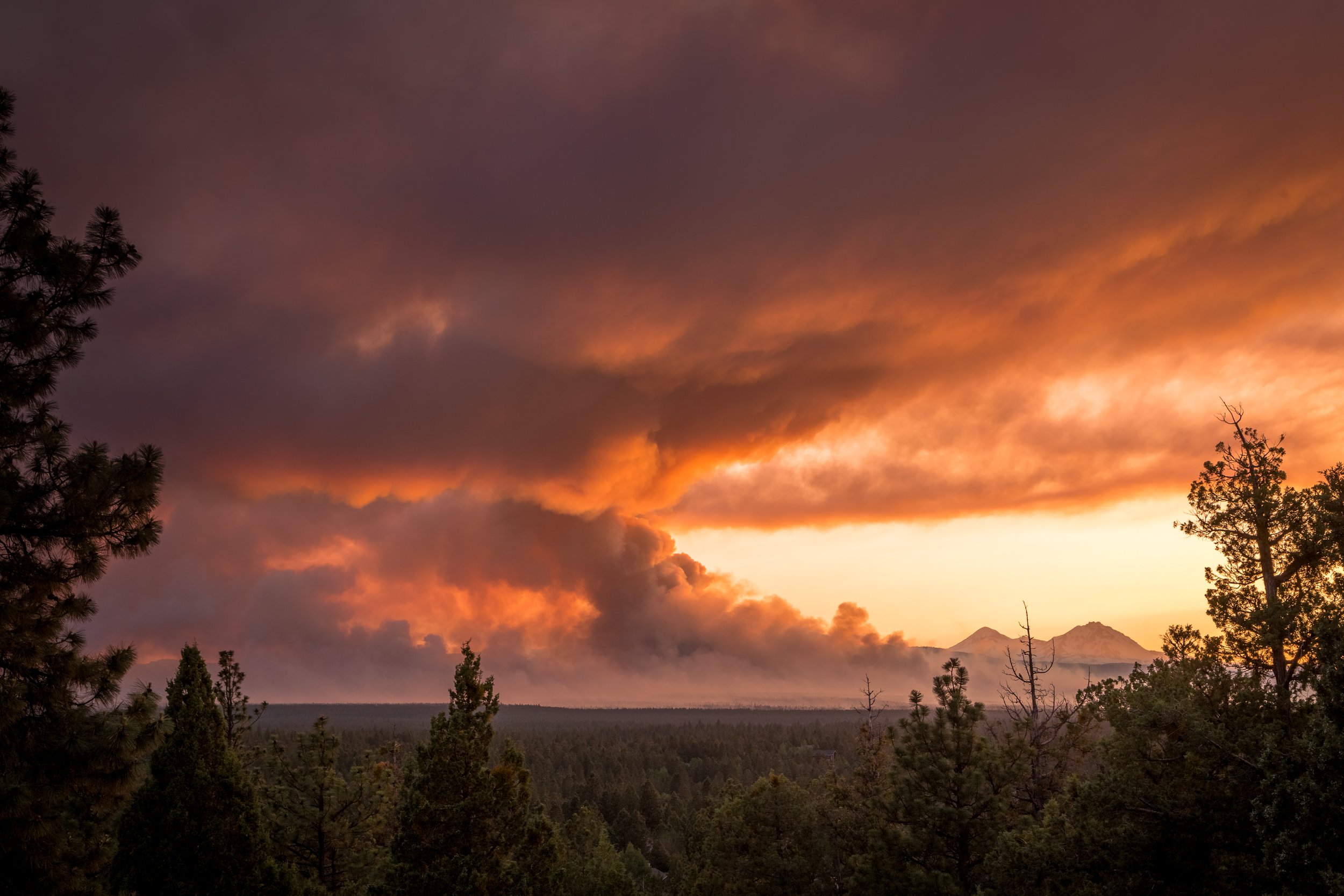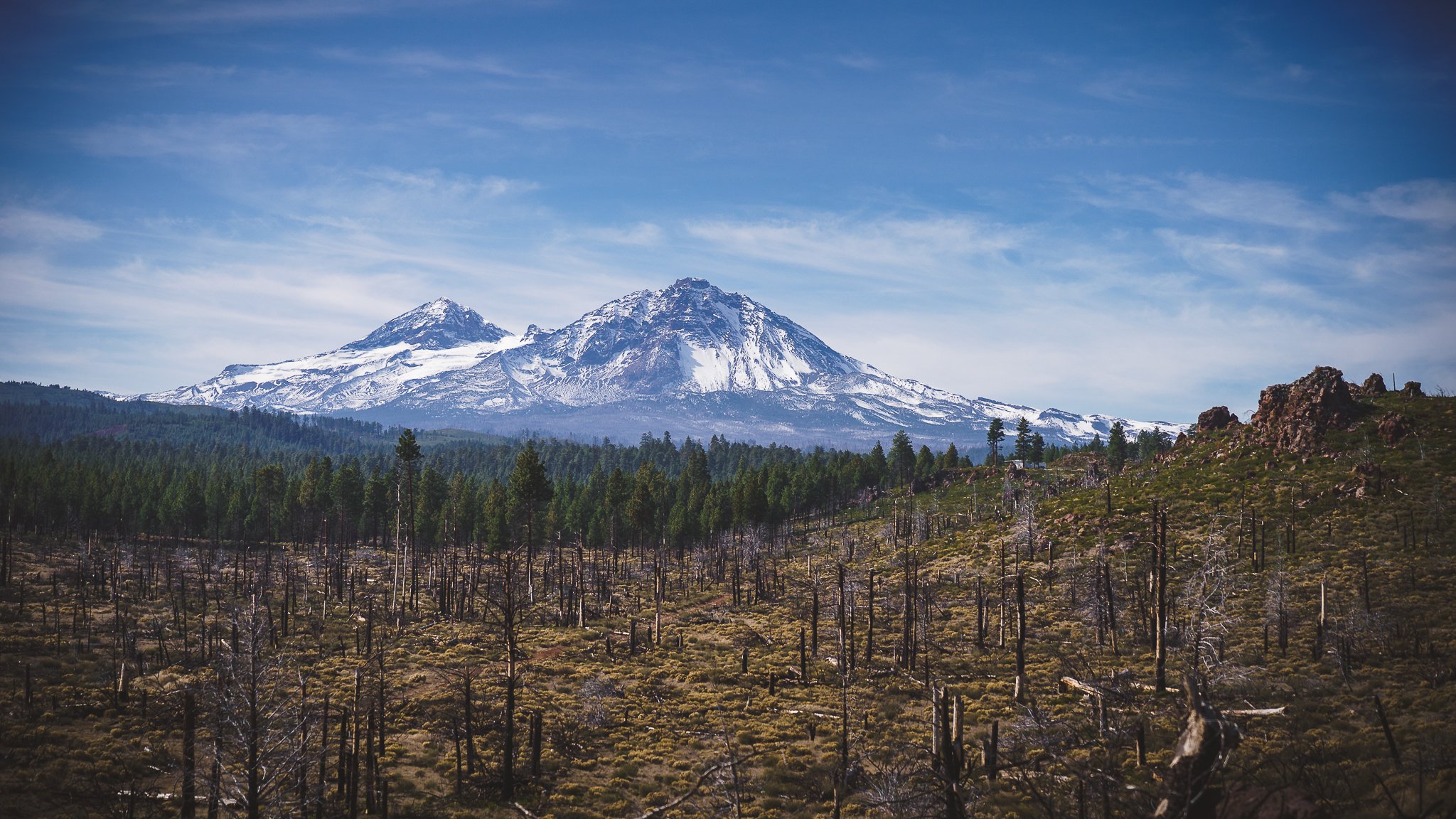
Skyline Forest is an unsafe & unwise place for development
Key takeaway:
There is a recent history of large-scale fires in Skyline Forest that have burned just outside our communities. The area’s fire-prone ecology and F1 Forest Use zoning make Skyline Forest both an unsafe and unwise place for development.

A history of large fires in Bull Springs Skyline Forest
Since 2010, multiple large wildfires have burned over 13,000 acres of Skyline Forest and neighboring portions of the Deschutes National Forest.
In March 2021, the Bull Springs Fire burned across the southwest extent of Skyline Forest, just minutes west of Bend. Wind gusts as high as 65 mph and rekindled the remnants of a backyard debris burn. The fire forced hundreds of people just north of Shevlin Park to evacuate their homes. Others in nearby neighborhoods were put on a Level 1 “Be Ready” evacuation notice by the Deschutes County Sheriff's Office.
The Bull Springs fire was eventually contained, and while no lives were lost and property damage was minimal, this situation illustrates the changing reality of Central Oregon’s relationship with wildfire as the community grows.
The Two Bulls fire burning across Skyline Forest. Photo: James Parsons.

The future of fire in Skyline Forest
Skyline Forest borders the Deschutes National Forest and is immediately adjacent to both Bend and Sisters. Like all forestland in the western US, it exists in balance with naturally occurring fire. Wildfire is a natural and essential phenomenon. Recently burned forests recycle nutrients back into the soil and create space for new life - increasing biodiversity, habitat, and food sources for wildlife.
However, climate change and the legacy of some outdated forest management practices from the last century are altering the nature of wildfires, leading to longer and more severe wildfire seasons.
Climate change that is driving increases in average surface air temperatures has exacerbated wildfire seasons across the western United States in recent years. Unprecedented drought, a trend towards decreasing snowpack, and heightened wildfire severity in Central Oregon are all intrinsically linked to climate change. Higher temperatures exacerbate the drought conditions that currently grip the American West. As a result, soil, vegetation, and other organic material are drying out earlier each year. This is compounded by a trajectory of substantial reductions in the winter and spring snowpack that melts out to replenish our region’s lands and rivers with water and moisture.
Because the Skyline tree farm has historically been managed as a commercial tree farm, it is now more susceptible to wildfire. 93.3% of the forest is young ponderosa with an average tree age of only 45 years old. Because ponderosas can live to be hundreds of years old, this uniformly young forest doesn’t have the same natural resistance to wildfires that old growth ponderosa forests have - yet. If allowed to age into old growth, this forest could eventually restore some of its natural fire resistance. Furthermore, the widespread practice of fire suppression on forest service land that prioritized extinguishing all wildfires as quickly as possible - even the beneficial and naturally occurring fires - has persisted for decades. This means that beneficial fire has been unnaturally absent from the landscape for too long.
These factors make Skyline Forest’s fire risk exceptionally high. During the summer of 2022, the current landowners closed Skyline Forest to all public access for the first time due to increased seasonal Industrial Fire Precaution Levels in Deschutes National Forest.
A nearby wildfire burns in Skyline Forest beyond a group of homes. Photo: James Parsons.

Coexisting with fire
A stand of burned trees in Skyline Forest. Photo: James Parsons.
As Central Oregon grows and the impacts of climate change-driven wildfire near our cities and towns increase, our communities need to develop in thoughtful, pragmatic, and fire-wise ways. Wildfires will continue to exist on this landscape and in Skyline Forest for generations to come.
What happens next in this forest will determine what the future looks like for fire on this landscape. This is an opportunity for a conservation-minded land steward to acquire and proactively manage this forestland with wildfire safety as a top priority. Through thoughtful management, Skyline Forest can be restored to a more fire-adapted landscape.
A portion of the burn area from the Rooster Rock fire of 2010. Photo: Nate Wyeth.

Current zoning limits development - for now
Oregon has maintained an exceptionally high standard for land use planning since 1973. Skyline Forest is currently designated and managed as an F1 Forest Use Zone. This designation limits certain activities - such as large-scale, luxury developments and destination resorts - that would compromise the land’s value to wildlife habitat, wildfire safety, water, and recreation.
Destination resorts in particular have a conspicuous history of land use conflict in Central Oregon. The proposed Thornburgh Resort has been mired in setbacks for decades due to concerns over water right acquisitions and in-stream flow mitigation. In the face of climate change and worsening drought, any new development will have to ensure it does not compromise community water use, rivers, streams, and the fish and wildlife that depend on these waterways.
Oregon’s land use laws are the pillars that Central Oregon’s quality of life is built upon. Although these laws are not easily circumvented, it takes time, financial resources, and widespread community opposition to challenge proposed development projects that would compromise natural resources and community values.
North Sister above Skyline Forest. Photo: James Parsons.

Improving wildfire safety in Skyline Forest
We have a responsibility to manage where our communities grow and avoid unsafe development in areas with extreme wildfire risk. Furthermore, if our community can acquire and protect Skyline Forest, we can move forward with management approaches that reduce wildfire risk and restore a healthier and more fire-resilient forest.
Aspiring for a safer and more climate-resilient future means some places make sense for development, and others don’t. Skyline Forest is not a wise or safe place for development.

